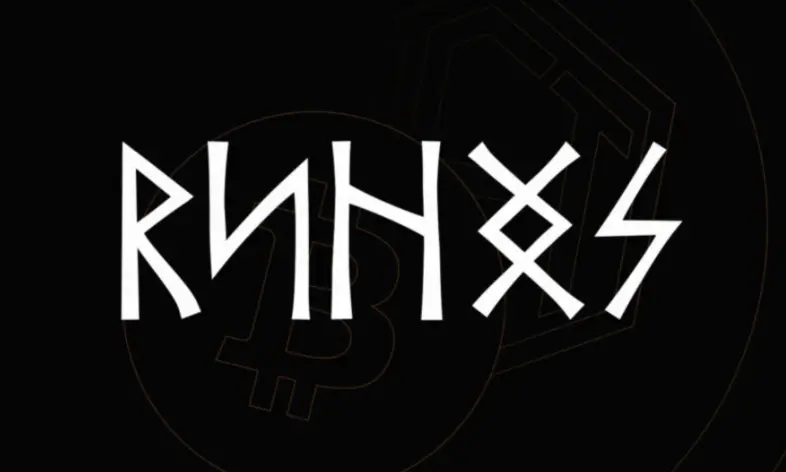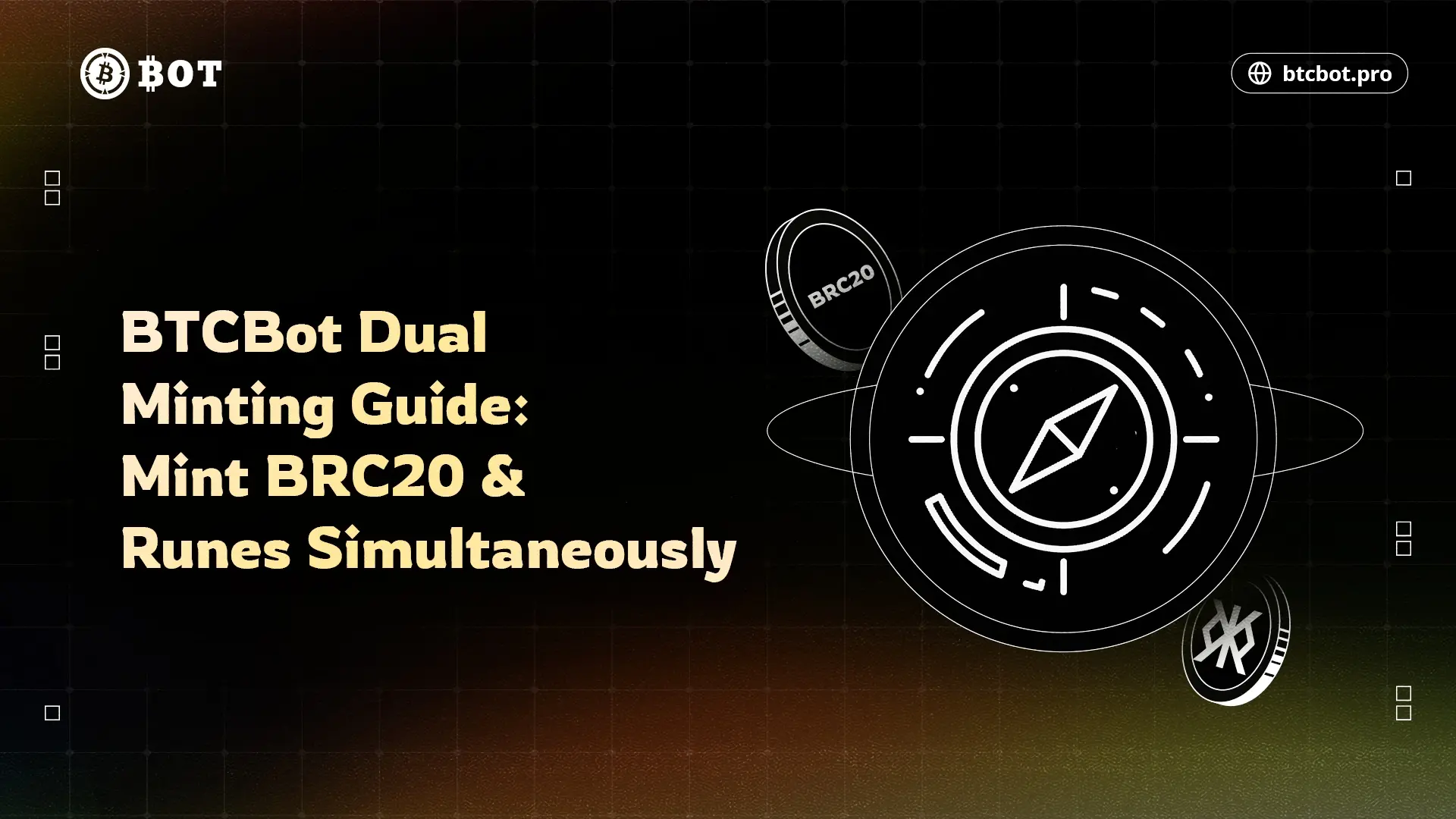Bitcoin players are still waiting for the runes to go live, while the meme coin players have already made a fortune on Ethereum
Author: Joyce, BlockBeats
Only one day left until the Bitcoin halving, and the Runes mainnet is about to launch. Are you still analyzing what opportunities to ambush? In the past few dozen hours, the powerful meme coins on Ethereum have already made a fortune.
In the past two days, many Runes-related projects on Ethereum have sprung up like bamboo shoots after a rain. Although their descriptions are rough and they appear somewhat chaotic, it does not affect the fact that these tokens have seen dozens of times increases since their launch. Interestingly, the time it takes for new Runes concept projects to achieve this high multiple increase has been reduced from a week to just a few hours.

The Bitcoin L2 RUNIC built around Runes launched on March 13. At that time, the popularity of the Runes protocol was not high enough, and RUNIC quickly halved just one day after its launch, subsequently dropping over 90%. As the Runes protocol gradually attracted community attention over the past two weeks, RUNIC also "came back to life," increasing over 6 times in just 5 days.
As of the time of writing, RUNIC's official Twitter account has fewer than 5,000 followers, which seems a bit low for a serious project, but it appears to be more than enough at the moment.
Another frequent visitor on the Ethereum hot list, Runes Bridge RB, has seen an increase of over 40 times in the 10 days since its launch, making it one of the "longer-lived" projects around the Runes protocol. As the name suggests, Runes Bridge aims to build a transmission bridge for assets between the Bitcoin network and the EVME network through the Runes protocol. In addition to being a bridge, Runes Bridge also serves as a Runes Launchpad platform.
Runes Bridge has performed more "seriously" compared to other projects, launching its testnet yesterday, allowing users to claim test tokens to experience the services provided by Runes Bridge. Regardless of whether these features are truly useful in the Runes ecosystem, at least for retail investors, such "services" make them willing to give RB a bit more confidence.
On April 15, the DeFi project Runes ₲ lyphs, which provides staking services on the Runes protocol, also launched its token RG. It reached over 10 times increase within the first two hours of its launch, then quickly headed towards "zero."
However, for retail investors looking for Runes concept alpha coins, RG, which is close to zero, seems to be a decent choice compared to the already rising RUNIC and RB. After three days of low-level fluctuations, RG exploded yesterday, with an intraday increase of nearly 7 times.
The lucky ones who made profits quickly withdrew. Although Runes ₲ lyphs is still holding a "Thread competition" for promotional projects and has launched staking services while the iron is hot, as of the time of writing, RG has already dropped about 60% from its peak.
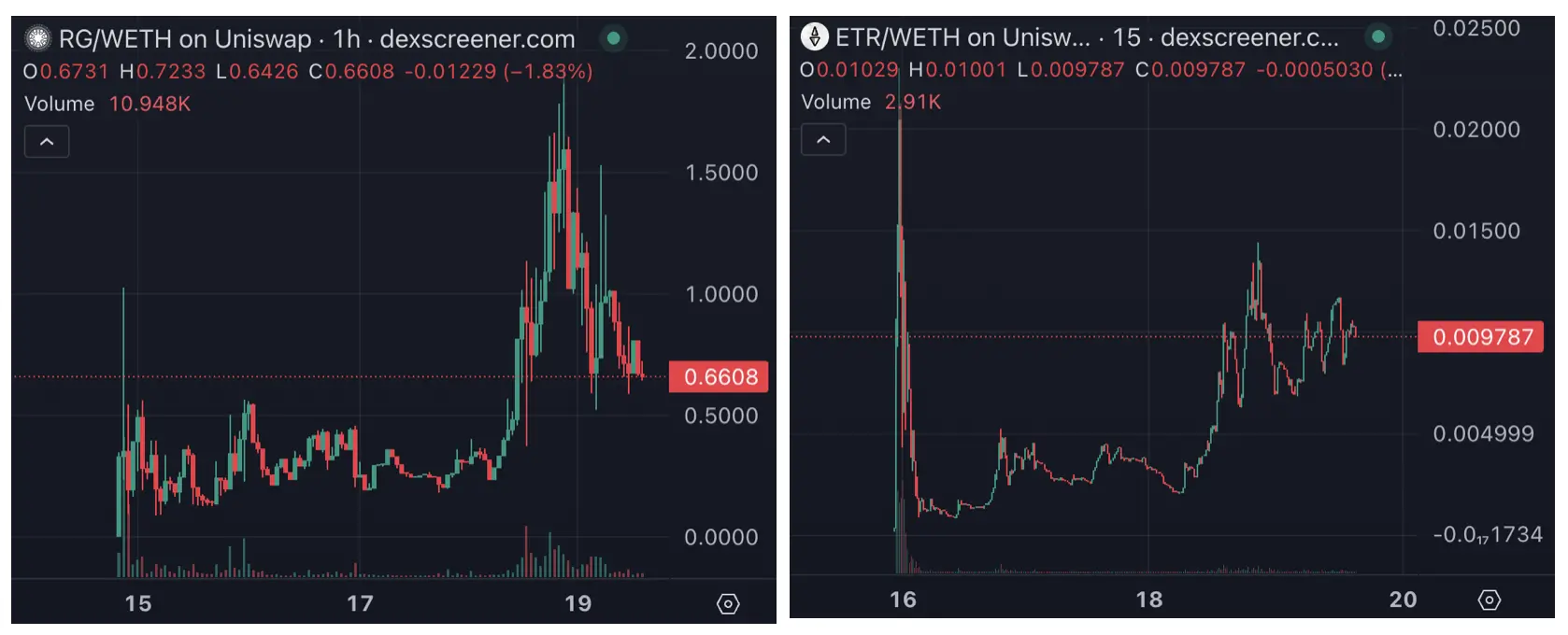
Yesterday's lucky ones included early holders of RG and retail investors who paid attention to Ethe Runes (ETR) at the right time. Similarly, ETR saw an increase of 20-30 times within a few hours of its opening, then quickly dropped over 90%. However, on April 18, ETR experienced a rebirth, with an intraday increase of 536%.
Although the Runes concept continues to grow, the life of meme coins is only two days. The aforementioned tokens all saw significant declines after achieving high multiples in a short time. Today, a new Runes concept token that carries the hopes of retail investors for quick wealth has launched.
At 7 AM Beijing time on April 18, RBot appeared, achieving a 4 times increase within half an hour of its launch, then dropping over 75% in the next hour and a half, reaching a low price of $0.27 around 9 AM. Generally, those who can make profits within the first half hour of a launch are often trading bots or scientists. Based on the trends of previous tokens, RBot might also receive some love from retail investors.
Perhaps due to the approaching deadline for the official launch of Runes, RBot's recovery came much faster than the aforementioned tokens. By 10 AM, RBot began to see "value discovery" gradually increase, and around 6 PM, it surged to a high of $2, with an 8-hour increase of 482%.
The project Bit Runes token BRUNE, which launched simultaneously with RBot this morning, reached the top of the Ethereum hot list by noon, currently boasting over 10 times increase since its launch. Bit Runes also seems to provide cross-chain bridge services around Runes, but specific details are still unknown—its official Twitter account has only a little over 200 followers and has posted only three tweets.
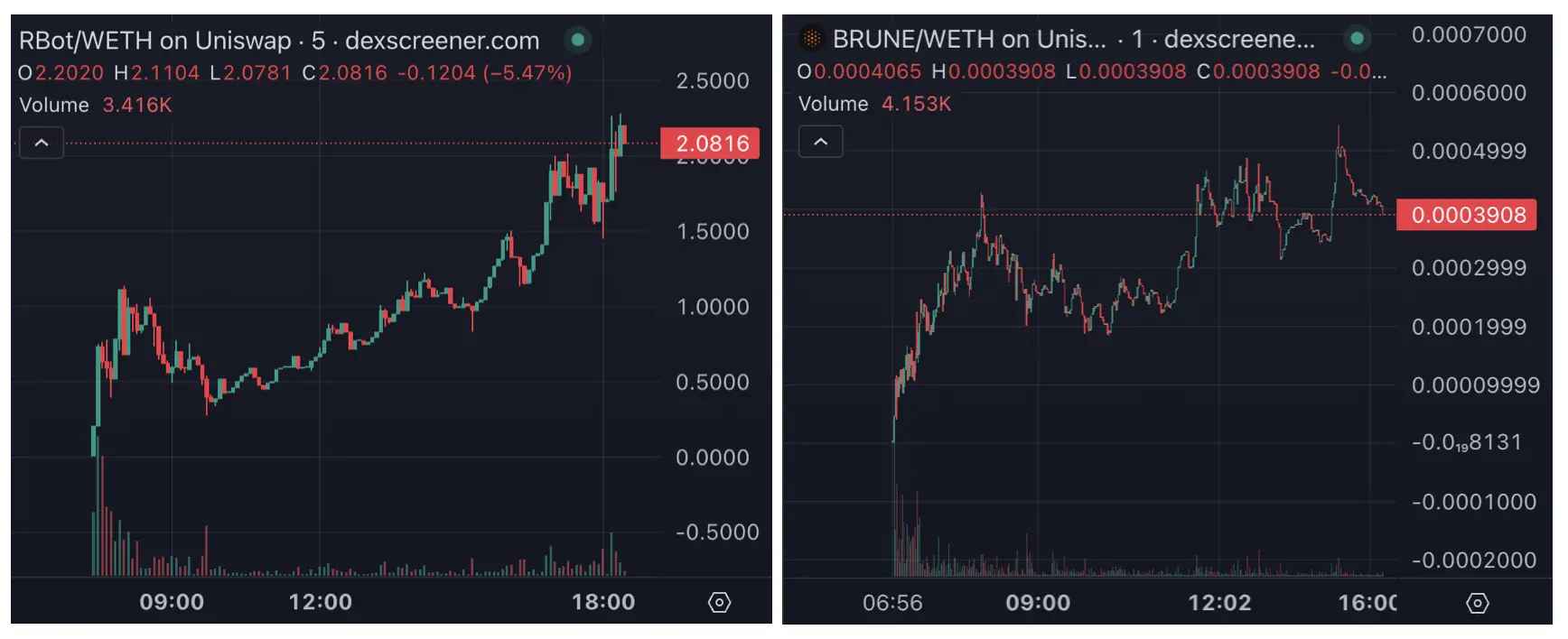
However, on-chain researcher DiTereh has already warned, "Do not buy high-risk trending narratives." He used BRUNE as an example, pointing out that most of the buying pressure at its launch came from trading sniper bots, and retail investors face significant selling pressure. Moreover, the contract itself carries great risks, such as developers not relinquishing control of the contract, allowing them to pause trading or modify buy/sell taxes.
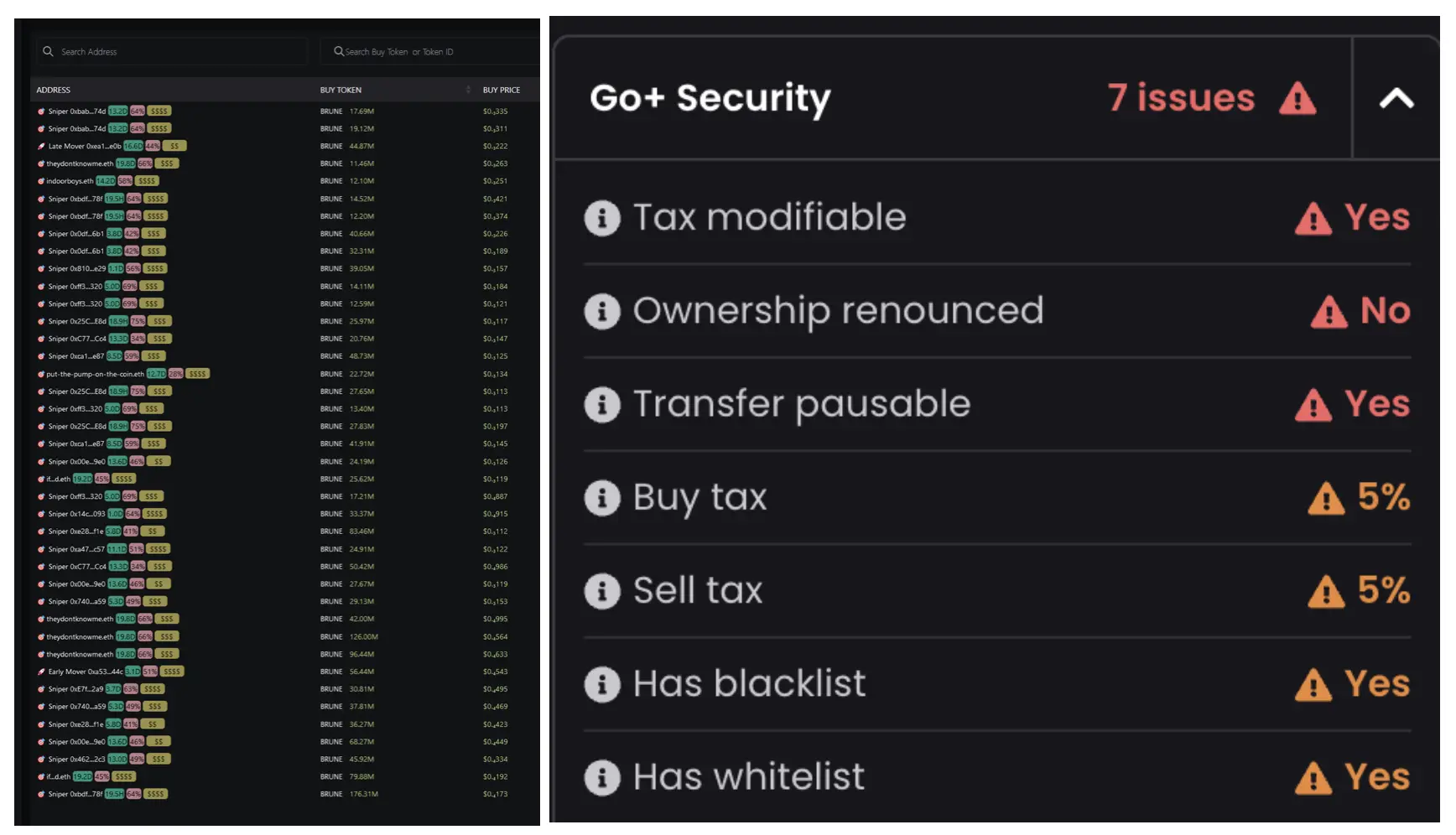
DiTereh's findings confirm the trend characteristics of these project tokens, which typically see a rapid increase to dozens of times shortly after launch, followed by a swift collapse towards zero, with tokens dropping 60%-80% within a few hours. This is followed by a "value discovery" process, which can last from several days to just a few hours, where retail investors pick up tokens close to zero, causing the price to rise again, sometimes even surpassing previous highs.
The chaotic excitement reminds one of the AI craze from two months ago. BlockBeats previously mentioned in "A Weekend 20 Times Increase, the AI Summer in the Crypto Market is Coming" that aside from established projects, some small-cap AI projects have been emerging in droves, achieving dozens of times increases within two to three weeks, far exceeding the growth rate of serious AI projects.
When the Bittensor ecosystem attracted community attention, new projects around the TAO ecosystem were more appealing than TAO itself. Regardless of whether their positioning is truly feasible, early holders could achieve high multiples, with as many as four or five new projects launching within a week under the Bittensor banner.
Contrary to community expectations, after the narrative for new AI projects was exhausted, funds did not shift to "more reliable" projects but instead withdrew entirely. Recently, AI MEMEs have faced their endgame, with project teams exiting in various ways.
One can sense that the same logic is playing out around Runes, and at a faster pace. The past two days have marked the peak of interest in Runes concept projects. On April 18, RUNIC saw a daily increase of 150%, RB peaked at 463%, and ETR had a daily increase of 536%. By April 19, these tokens experienced retracements of 40%-70%, while RB ot and BRUNE were simultaneously born, creating new soaring trajectories. Tomorrow, perhaps a new Runes concept coin will appear on the hot list, likely with an even shorter lifespan.
Although Runes is the wealth code of consensus amidst the Bitcoin halving, users buying new tokens in the past two days based on the profit logic of the original Runes concept token RB may have already encountered significant retracements. If the entry point differs by just a few hours, they may even face the risk of being "buried." In this "mutual agreement" narrative trade, who will emerge as the final winner?



